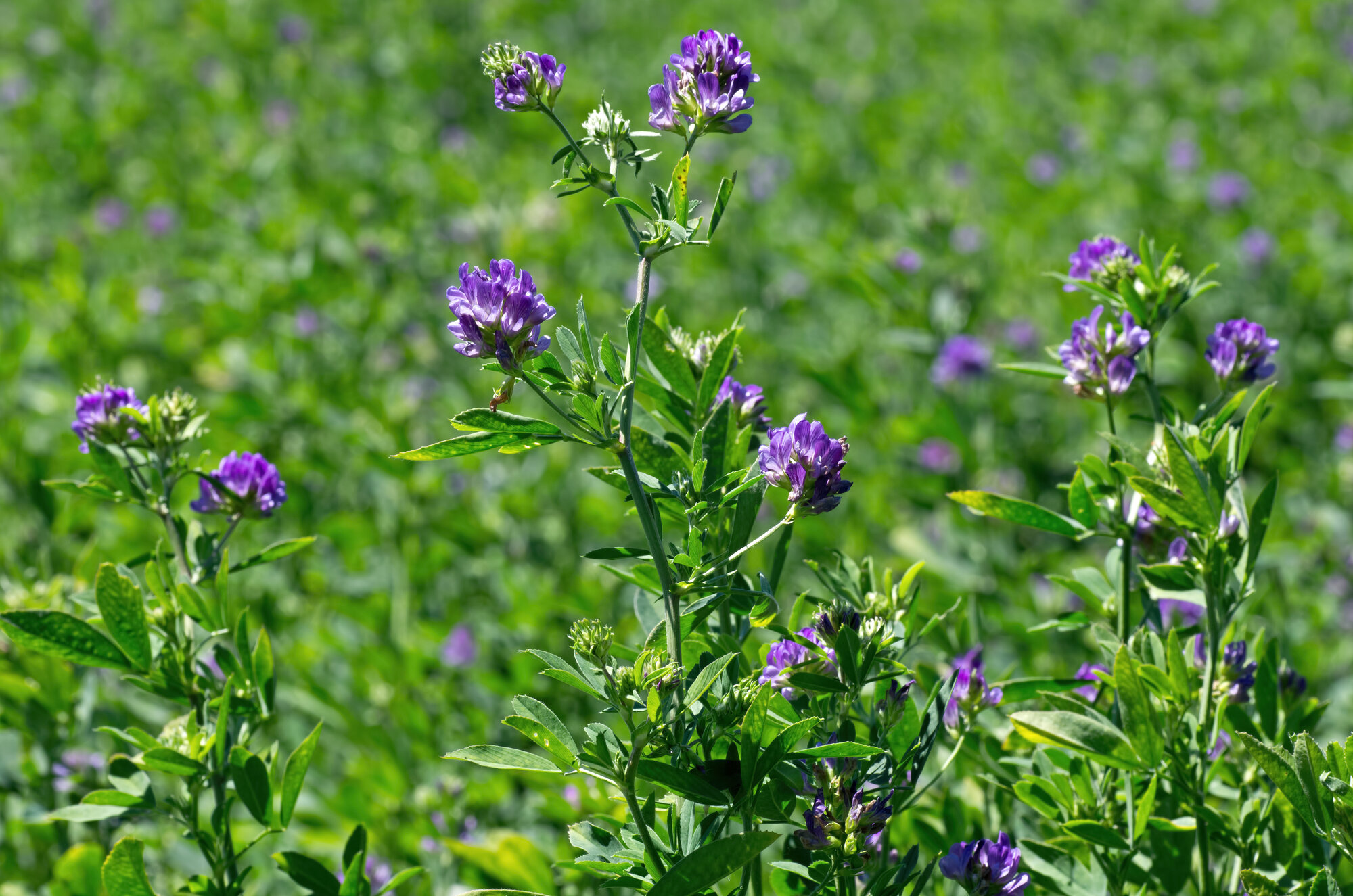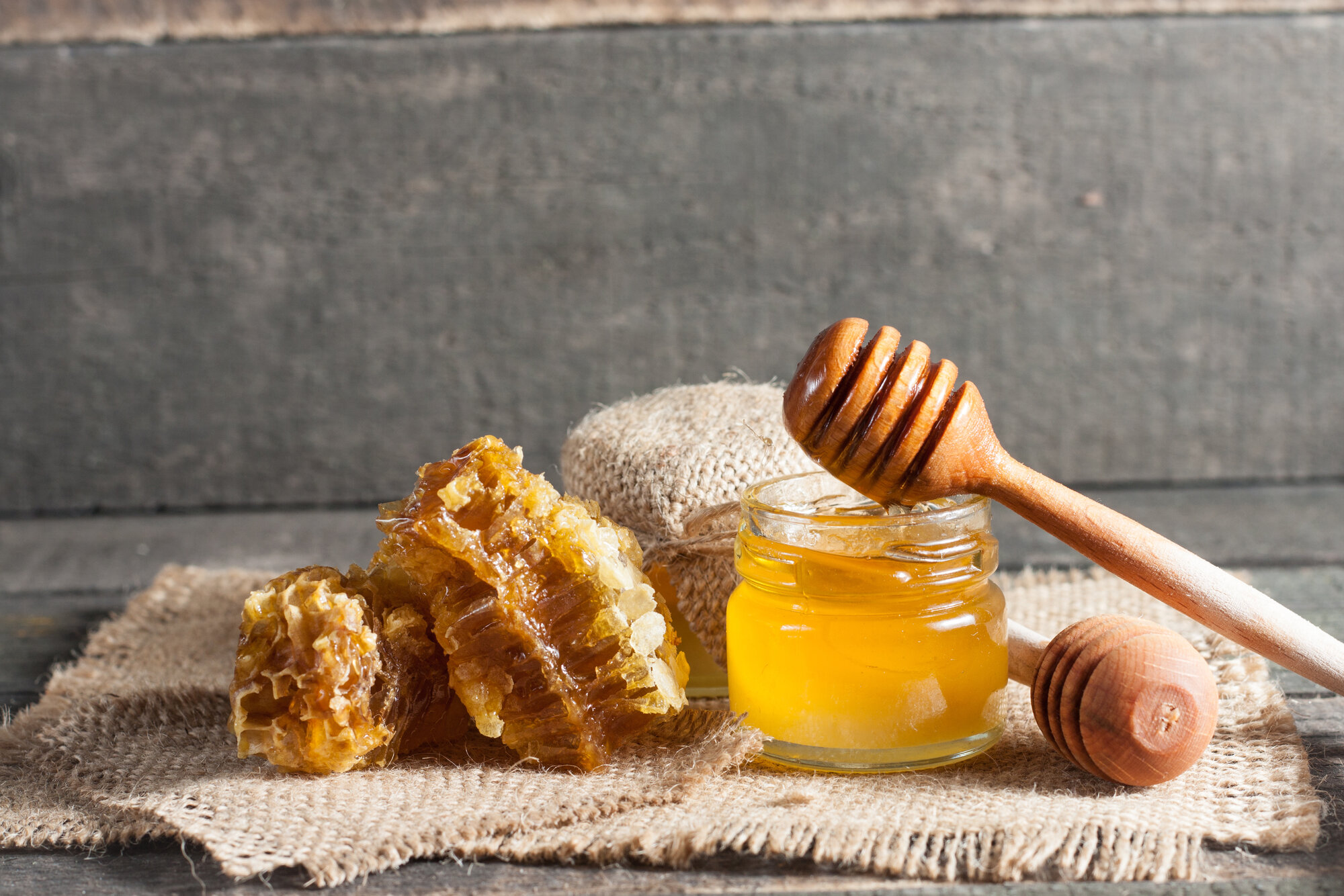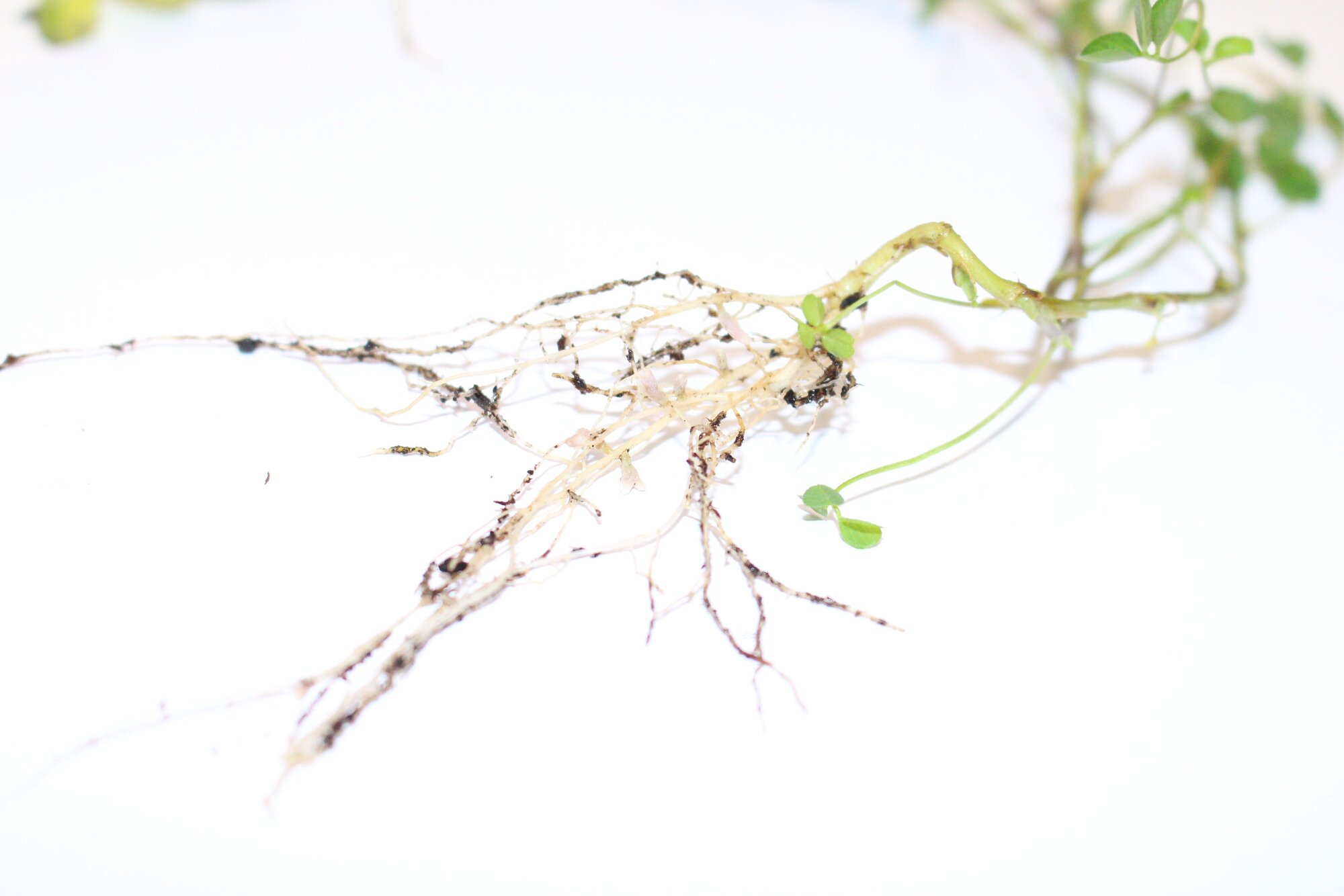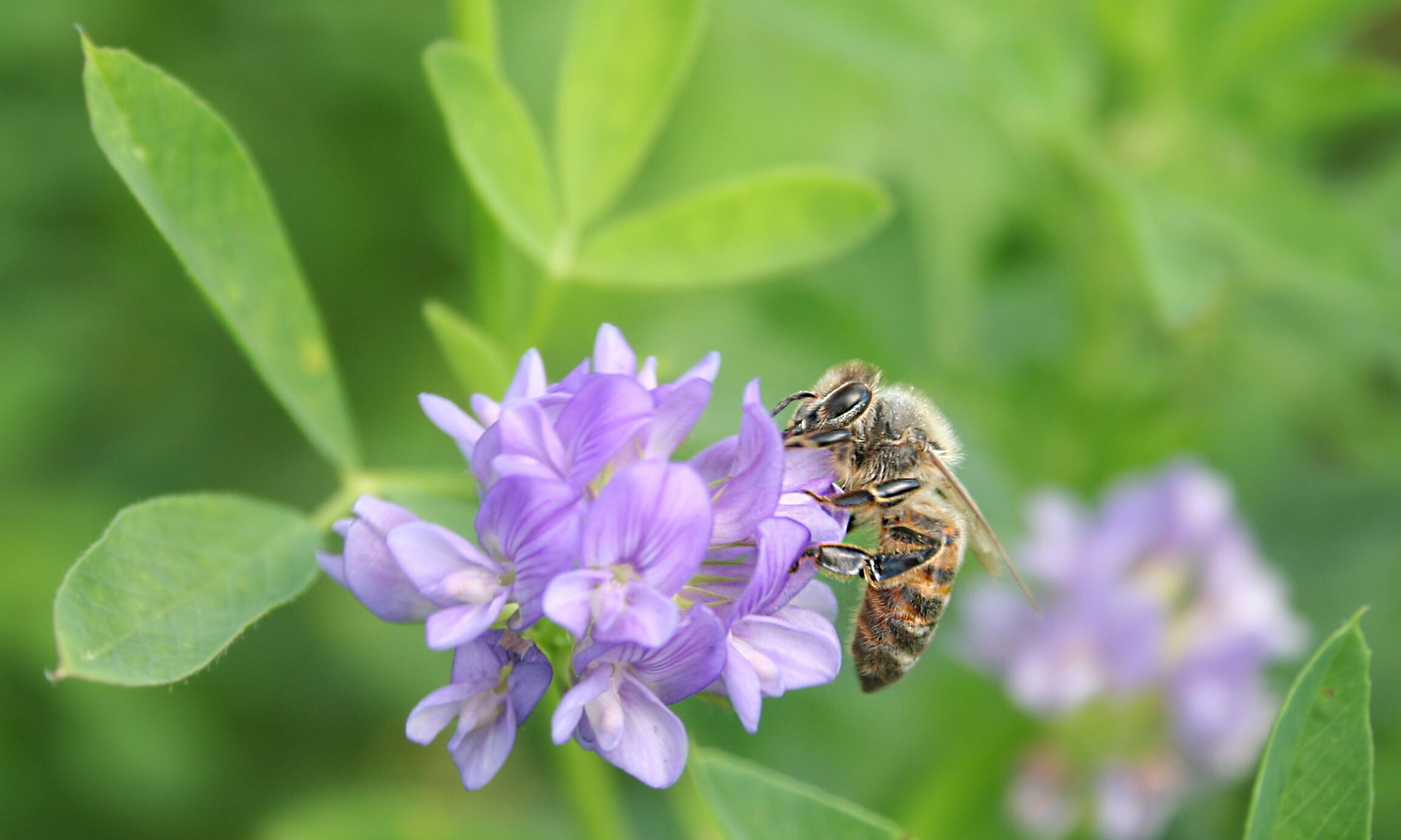Cover crops in focus: Alfalfa

Origin and history
Alfalfa has been used as a fodder plant in Persia for over 2,000 years, reaching Greece around 500 BC. From there it spread throughout southern Europe, with its first use in Italy occurring in 150 BC. In Italy, alfalfa was primarily used as forage for sheep. At the beginning of the 16th century, the rulers of the Spanish colonies in the Americas brought alfalfa to the New World, primarily to Mexico and Peru. The crop’s journey to Germany began in the late 17th century in Württemberg, though it has only been cultivated for around 200 years in more northerly regions of the country. Alfalfa was introduced to Australia and New Zealand in the 19th century. There, however, the plants produced nearly no seeds due to a lack of suitable pollinators. Several European bumblebee species were introduced to help with pollination in the late 19th century.
In 2005, the first genetically modified (GM) alfalfa varieties were approved for use as fodder in the USA. An American agricultural company has developed a variety of alfalfa that is resistant to the broad-spectrum herbicide glyphosate. In 2006, the first year in which these varieties were cultivated in the USA, they were planted on 80,000 to 100,000 hectares.
Following various legal disputes and subsequent limits on cultivation, the varieties received unrestricted approval for planting in 2011. Since then, the area under cultivation has increased dramatically. Although a few trials with GM alfalfa have been carried out in Europe, it is not currently cultivated commercially, a situation that is not expected to change in the future.

Use and yield
Alfalfa is currently grown on every continent save Antarctica, playing an important role in the fodder and protein supply for livestock.
Alfalfa also provides nectar to beneficial insects such as honeybees and bumblebees, meaning that fields of alfalfa are often abuzz with insect life.
Alfalfa is primarily used as silage, hay or green meal for pellets, and more occasionally in pastures. It can reach ages of up to 12 years depending on factors such as soil and climate. In Germany, alfalfa is generally used for 2-3 years at most, though it can be used for longer in other climate zones. In most climate zones, alfalfa is cut 3-4 times per year. Yields can reach as high as 150 dt of dry matter per hectare, though significant regional variation is observed. The yield can also be affected by weather and the ripeness stage at the time of cutting. To remain usable over multiple years, the plants should be allowed to bloom once per year.
Alfalfa has had an increasing number of proponents in recent years, who see it as a sensible alternative to imported soya beans for providing livestock with protein. Alfalfa’s protein yields of 25 dt per hectare per year are twice those of soya beans, which yield around 12 dt per hectare per year.

Cultivation and advantages
Like other legumes, alfalfa can take nitrogen from the air and make it available to plants thanks to the action of symbiotic root nodule bacteria (rhizobia). This makes it possible for alfalfa to form protein independent of the levels of nitrogen in the soil. The reddish nodules on the roots indicate the active symbiosis.
Alfalfa is an ideal preceding crop for other plants, since its symbiotic N fixation increases the soil’s content of plant-available nitrogen and the root residues enrich the soil with organic matter. The prominent taproot that alfalfa forms increases soil porosity within the rhizosphere.
The roots of the subsequent crop can grow into the root channels more easily and form a stronger root system. Alfalfa does not tolerate being sown in successive plantings or directly following other legumes. Cultivation intervals of at least 5 years should be maintained in order to prevent the spread of soil-borne fungal pathogens such as sclerotinia trifoliorum (clover rot) or fusarium root rot.

Alfalfa is mostly grown in monocultures, though alfalfa-grass mixtures are also common. These mixtures are especially favoured in organic agriculture, since they help to provide nitrogen and improve soil structure.
In addition to its use as a fodder plant, alfalfa also has medicinal uses and has been used as a dietary supplement. It has been purported to have a positive effect on several ailments, including high blood pressure, fungal infections and digestion problems. Alfalfa’s health benefits, however, remain contested.


